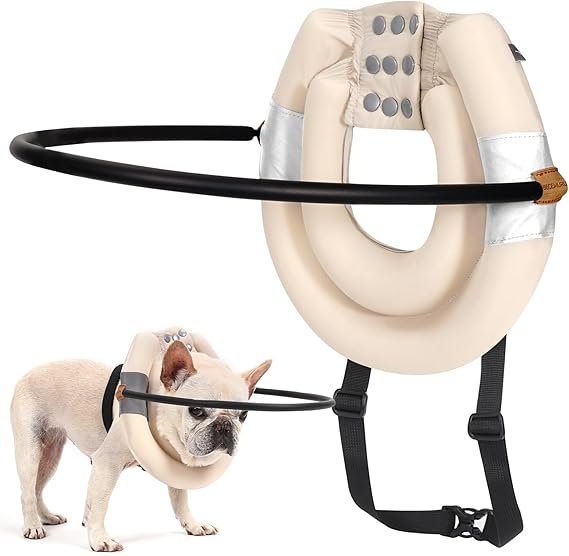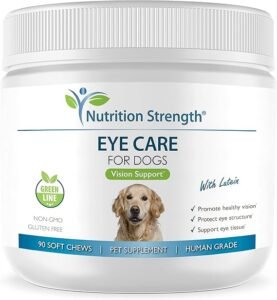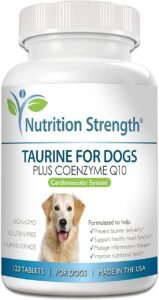Working Breeds
Why Do Dogs Go Blind: Causes, Supplements, and Care Guide

Introduction
Why Do Dogs Go Blind: Vision loss in dogs can be a heartbreaking experience for both pets and their owners. Blindness may occur suddenly or gradually, and it can stem from various medical conditions. Understanding the causes, recognizing symptoms early, and providing proper care can significantly improve a dog’s quality of life. In this article, we’ll explore the reasons why dogs go blind, recommended supplements to support eye health, and essential care tips for blind dogs.
For more information regarding 4 seasonal cxcercieses of all dog breeds recommended by the doctors and experts,you can visit our youtube channel:
Common Causes of Blindness in Dogs
1. Cataracts
Cataracts cause cloudiness in the eye lens, leading to blurred vision and eventual blindness. They are common in older dogs and some breeds, such as Poodles and Cocker Spaniels. Diabetes is a major risk factor for cataracts in dogs.
2. Progressive Retinal Atrophy (PRA)
PRA is a genetic condition that causes gradual degeneration of the retina, eventually leading to complete blindness. Breeds like Labrador Retrievers, Poodles, and Dachshunds are more prone to PRA.
3. Glaucoma
Glaucoma is a condition where increased pressure inside the eye damages the optic nerve. It can lead to irreversible blindness if left untreated. Symptoms include eye redness, swelling, and excessive tearing.
4. Sudden Acquired Retinal Degeneration Syndrome (SARDS)
SARDS leads to rapid and irreversible blindness. The exact cause is unknown, but it is linked to hormonal imbalances and immune system dysfunction. Middle-aged female dogs are at higher risk.
5. Retinal Detachment
Retinal detachment can occur due to injury, high blood pressure, or underlying health conditions. If caught early, some cases can be treated to restore partial vision.
6. Corneal Ulcers and Injuries
Dogs with eye injuries or corneal ulcers may experience vision loss. Breeds with protruding eyes, such as Pugs and Bulldogs, are more susceptible.
7. Diabetes-Related Blindness
Diabetic dogs are at risk of developing cataracts, which can lead to blindness if not managed properly. High blood sugar levels contribute to lens changes in the eyes.
8. Tumors and Neurological Disorders
Brain tumors, optic nerve diseases, and other neurological conditions can affect a dog’s vision, causing partial or complete blindness.
Supplements for Eye Health in Dogs
Supplements for Eye Health in Dogs (Breed-Specific) Click Any Picture in The Table to Buy From Amazon
Caring for a Blind Dog
1. Maintain a Consistent Environment
Avoid rearranging furniture and keep pathways clear to help your dog navigate safely.
2. Use Scent and Sound Cues
Use bells, essential oils, or verbal commands to help your dog locate objects and move confidently.
3. Leash and Harness Training
Use a harness with a ‘Blind Dog’ tag and train your dog to follow verbal cues for safe walks.
4. Provide Mental Stimulation
Puzzle toys, scent games, and training exercises keep blind dogs engaged and active.
5. Protect Their Eyes
Avoid exposing your dog to potential eye irritants and use dog goggles if needed.
6. Vet Check-Ups
Regular eye exams can help detect problems early and slow the progression of certain conditions.
7. Use Safety Barriers
Baby gates or protective bumpers can prevent injuries around staircases and sharp furniture.
8. Encourage Socialization
Let your blind dog interact with other pets under supervision, ensuring they feel secure and confident.
Closing Statement
Blindness in dogs can be caused by various medical conditions, including cataracts, glaucoma, PRA, and diabetes. While some causes are treatable, others require lifelong care and adaptation. Supplements such as lutein, omega-3s, and bilberry extract can support eye health, while proper care strategies can help blind dogs lead fulfilling lives. Early detection and veterinary intervention are key to managing vision loss effectively.
Understanding and supporting a blind dog requires patience, but with love and the right care, they can continue to thrive and enjoy a happy life.
Frequently Asked Questions (FAQs)
Can blindness in dogs be reversed?
Some causes of blindness, such as cataracts, may be reversible with surgery. However, conditions like PRA and SARDS lead to permanent vision loss. Early diagnosis and treatment can improve a dog’s quality of life.
How can I tell if my dog is going blind?
Signs of vision loss include bumping into objects, reluctance to move in unfamiliar areas, cloudy eyes, dilated pupils, and increased anxiety, especially in low-light conditions.
Are certain breeds more prone to blindness?
Yes, some breeds are genetically predisposed to eye diseases. For example, Labrador Retrievers and Poodles are at higher risk for PRA, while Cocker Spaniels and Siberian Huskies are more prone to cataracts.
What can I do to help my blind dog adjust?
Maintain a consistent environment, use scent and sound cues, provide mental stimulation, and ensure regular vet visits. Dogs rely on their other senses to navigate the world, so patience and gentle guidance are essential.
Can diet and supplements prevent blindness in dogs?
While diet and supplements can support eye health, they cannot guarantee blindness prevention. Antioxidants like lutein, omega-3 fatty acids, and vitamin A can help slow the progression of some degenerative eye conditions.
How do blind dogs navigate at home?
Dogs rely on memory, scent, and sound to move around. Avoid rearranging furniture, use textured rugs as landmarks, and provide scent-marked areas to help them navigate confidently.
Should I adopt a blind dog?
Blind dogs can lead fulfilling lives with the right care and environment. If you are willing to provide extra support and training, adopting a blind dog can be a rewarding experience.
How often should I take my dog for an eye check-up?
Annual eye check-ups are recommended, but dogs with a history of eye conditions may require more frequent visits. Early detection can help manage or slow vision loss.
Working Breeds
Brittany Dog: Breed Types By Countries

A Comprehensive Guide
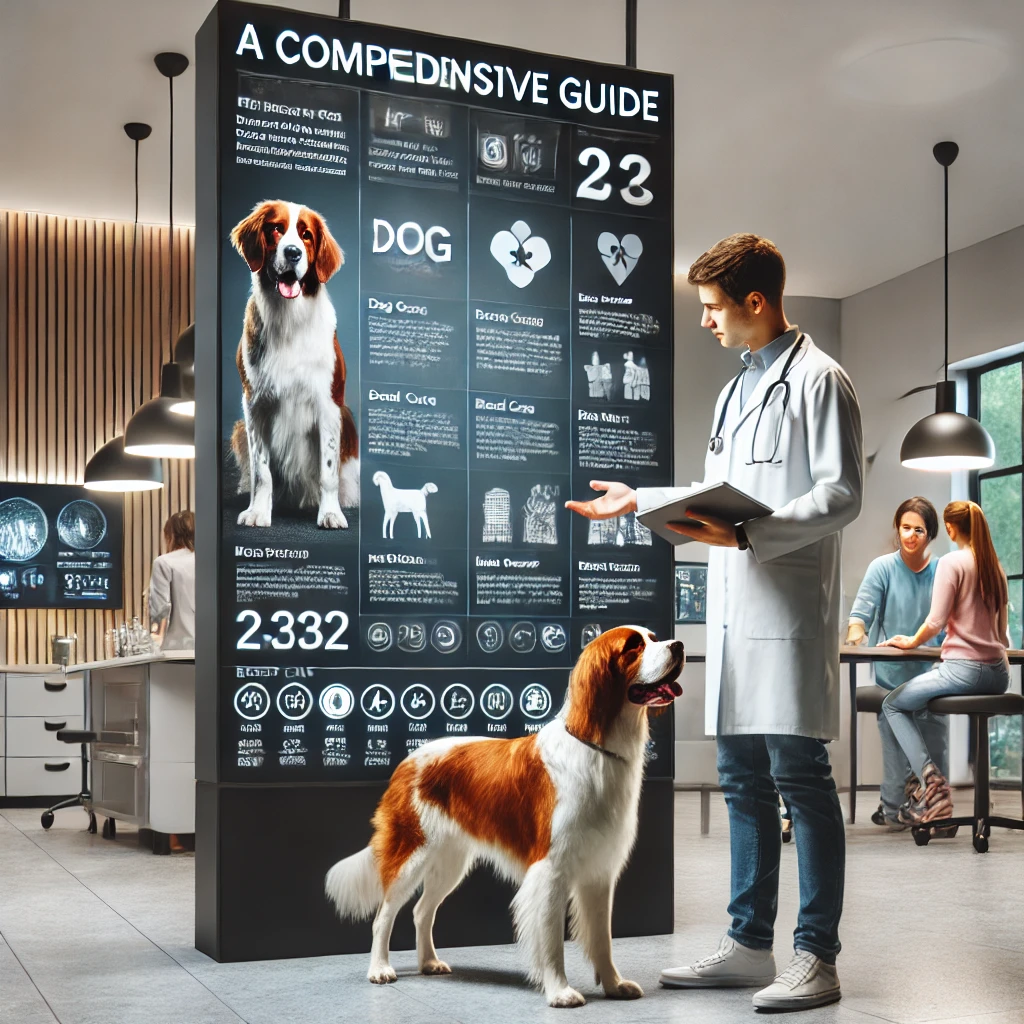
The Brittany Dog: is a versatile and energetic breed known for its intelligence, agility, and friendly nature. Originally bred as a hunting dog, the Brittany has become a beloved companion for families and active individuals. This guide covers the breed’s history, habits, temperament, grooming needs, exercise requirements, and essential supplements for males and pregnant females.
For more information regarding 4 seasonal cxcercieses of all dog breeds recommended by the doctors and experts,you can visit our youtube channel:
Brief History of the Brittany Dog

- Origin:
- The Brittany originated in the Brittany region of France in the 17th century.
- Purpose:
- Bred as a gun dog for hunting birds and small game.
- Recognition:
- Officially recognized by the American Kennel Club (AKC) in 1934.
- Popularity:
- Known for its versatility in hunting, agility, and companionship.
Brittany Dog by Countries

| Country | Type | Characteristics |
|---|---|---|
| France | Original Brittany (Epagneul Breton) | Smaller, compact, and highly skilled in hunting. |
| United States | American Brittany | Slightly larger, bred for both hunting and show purposes. |
| United Kingdom | Brittany Spaniel | Similar to the French type, often used for field trials and hunting. |
Brittany Dog Breed Types
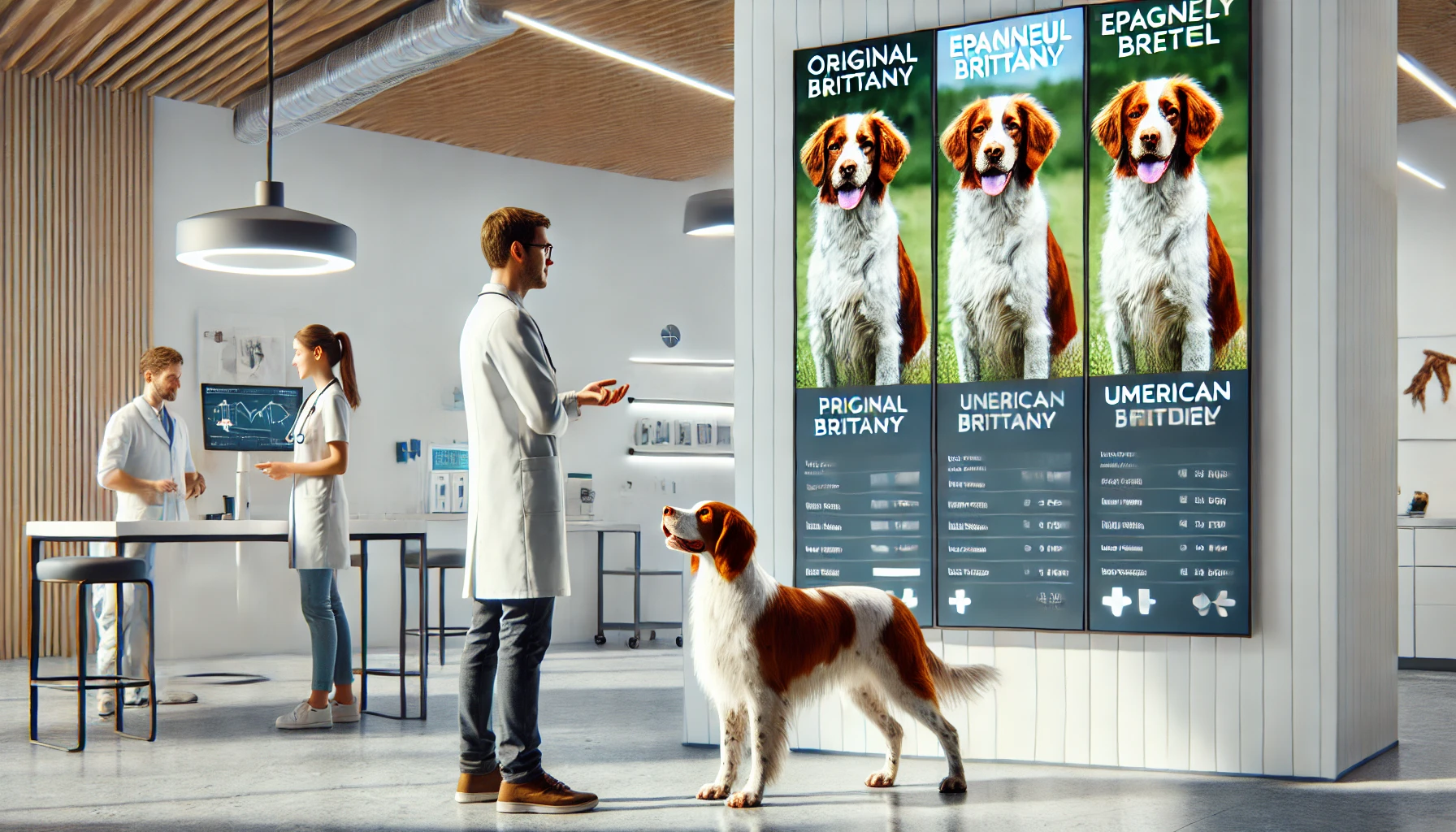
The Brittany is a versatile and energetic breed with variations based on regional breeding practices and purposes. Below is a breakdown of the main types of Brittany dogs, their characteristics, and their uses.
1. French Brittany (Epagneul Breton)

- Origin:
- Brittany region of France.
- Size:
- Smaller and more compact than the American Brittany.
- Weight:
- 30-40 pounds (13.5-18 kg).
- Height:
- 17.5-20.5 inches (44-52 cm).
- Coat:
- Medium-length, dense, and slightly wavy.
- Colors:
- Orange and white, liver and white, black and white (rare).
- Temperament:
- Highly skilled in hunting, intelligent, and energetic.
- Uses:
- Primarily bred for hunting birds and small game.
2. American Brittany

- Origin:
- United States.
- Size:
- Slightly larger and more robust than the French Brittany.
- Weight:
- 30-40 pounds (13.5-18 kg).
- Height:
- 17.5-20.5 inches (44-52 cm).
- Coat:
- Medium-length, dense, and slightly wavy.
- Colors:
- Orange and white, liver and white, roan patterns.
- Temperament:
- Friendly, intelligent, and versatile.
- Uses:
- Bred for both hunting and show purposes.
3. Brittany Spaniel (Traditional Type)
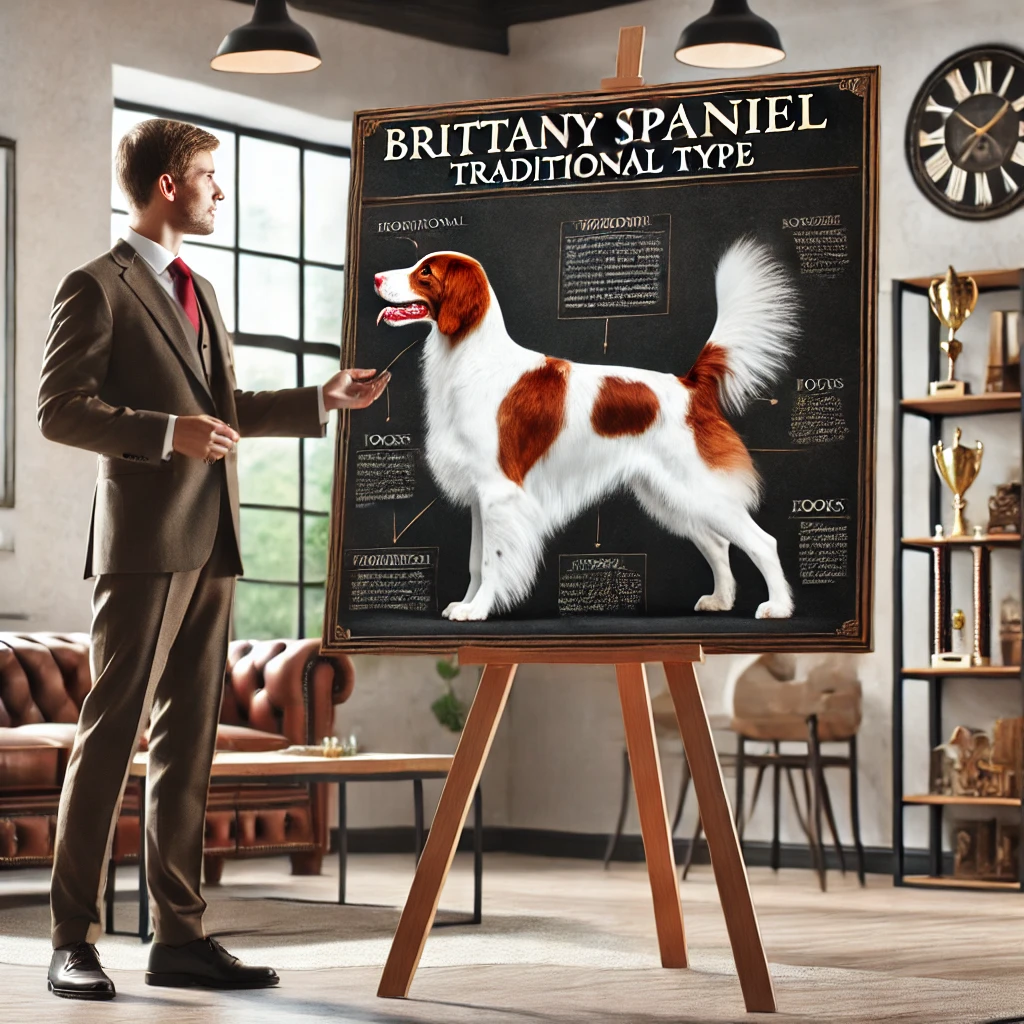
- Origin:
- United Kingdom and other European countries.
- Size:
- Similar to the French Brittany.
- Weight:
- 30-40 pounds (13.5-18 kg).
- Height:
- 17.5-20.5 inches (44-52 cm).
- Coat:
- Medium-length, dense, and slightly wavy.
- Colors:
- Orange and white, liver and white, tricolor (white, orange, and liver).
- Temperament:
- Energetic, intelligent, and excellent in field trials.
- Uses:
- Primarily used for hunting and field trials.
Key Differences Between Brittany Types

| Aspect | French Brittany | American Brittany | Brittany Spaniel |
|---|---|---|---|
| Size | Smaller and more compact. | Slightly larger and more robust. | Similar to French Brittany. |
| Coat Colors | Orange and white, liver and white, black and white (rare). | Orange and white, liver and white, roan patterns. | Orange and white, liver and white, tricolor. |
| Primary Use | Hunting birds and small game. | Hunting and show purposes. | Hunting and field trials. |
| Temperament | Highly skilled in hunting, intelligent, and energetic. | Friendly, intelligent, and versatile. | Energetic, intelligent, and excellent in field trials. |
Common Traits in Brittany

While all Brittany types share common traits like intelligence, energy, and a friendly nature, they differ slightly in size, coat colors, and primary uses. Whether you’re looking for a hunting companion, a show dog, or a family pet, the Brittany is a versatile and loving breed that adapts well to various roles.
Habits of the Brittany Dog

- Energetic:
- Requires plenty of exercise and mental stimulation.
- Intelligent:
- Quick learners, excel in obedience and agility training.
- Social:
- Thrives on human interaction and enjoys being part of family activities.
- Hunting Instincts:
- Strong prey drive; may chase small animals.
Human and Family Friendliness

- Human-Friendly:
- Extremely affectionate and loyal to their owners.
- Child-Friendly:
- Gentle and patient with children, making them excellent family pets.
- Other Pets:
- Generally good with other dogs but may chase smaller pets due to their hunting instincts.
Brittany Dogs Body Colors by Country

| Country | Common Colors |
|---|---|
| France |
|
| United States |
|
| United Kingdom |
|
Temperament and Personality

- Friendly:
- Outgoing and sociable with people and other dogs.
- Energetic:
- Requires regular exercise to stay happy and healthy.
- Intelligent:
- Easy to train and eager to please.
- Sensitive:
- Responds best to positive reinforcement and gentle training methods.
Life Span of Male and Female Brittany Dogs

| Gender | Average Life Span |
|---|---|
| Male | 12-14 years |
| Female | 12-14 years |
Note: There is no significant difference in life span between males and females.
Grooming Needs
- Coat Care:
- The Brittany has a medium-length, dense coat that requires weekly brushing to remove loose hair and prevent matting.
- Bathing:
- Bathe as needed (every 6-8 weeks) to keep the coat clean and healthy.
- Ears:
- Check and clean ears weekly to prevent infections.
- Nails:
- Trim nails every 2-3 weeks to avoid overgrowth.
- Teeth:
- Brush teeth 2-3 times a week to maintain oral health.
Exercise Requirements

- Daily Exercise:
- At least 60-90 minutes of vigorous activity, such as running, hiking, or playing fetch.
- Mental Stimulation:
- Engage in activities like agility training, puzzle toys, or obedience training.
- Hunting or Field Work:
- Ideal for Brittanys, as it fulfills their natural instincts.
Supplements for Male Brittany Dogs

Essential Supplements for Male and Pregnant Female Brittany Dogs
Supplements for Pregnant Female Brittany Dogs

Closing Statement

The Brittany is a lively, intelligent, and affectionate breed that thrives in active households. With proper care, grooming, exercise, and nutrition, Brittanys make excellent companions for families, hunters, and outdoor enthusiasts. Whether you’re looking for a hunting partner or a loyal family pet, the Brittany is a versatile and loving choice.
(FAQs) About Brittany Dogs

Below are detailed answers to common questions about Brittany dogs, including their temperament, care, and suitability as family pets.
1. What is a Brittany dog?
The Brittany is a medium-sized hunting dog known for its intelligence, energy, and friendly nature. It originated in France and is popular for both hunting and companionship.
2. Are Brittany dogs good with children?
Yes, Brittanys are gentle, patient, and affectionate with children, making them excellent family pets.
3. How much exercise does a Brittany need?
Brittanys require 60-90 minutes of vigorous exercise daily, such as running, hiking, or playing fetch. They also need mental stimulation through training or puzzle toys.
4. Are Brittany dogs easy to train?
Yes, Brittanys are highly intelligent and eager to please, making them easy to train. They respond best to positive reinforcement and gentle methods.
5. Do Brittany dogs shed?
Yes, Brittanys have a medium-length coat that sheds moderately. Weekly brushing can help manage shedding.
6. Are Brittany dogs good with other pets?
Brittanys generally get along well with other dogs but may chase smaller pets due to their strong hunting instincts.
7. What is the life span of a Brittany dog?
The average life span of a Brittany is 12-14 years.
8. Do Brittany dogs bark a lot?
Brittanys may bark to alert their owners or when excited, but they are not excessive barkers. Proper training can help manage barking.
9. Are Brittany dogs hypoallergenic?
No, Brittanys are not hypoallergenic. They shed moderately and may not be suitable for people with severe allergies.
10. What colors do Brittany dogs come in?
Common colors include orange and white, liver and white, and roan patterns. Tricolor (white, orange, and liver) is also seen in some regions.
11. Are Brittany dogs good for first-time owners?
Yes, Brittanys are friendly and easy to train, making them suitable for first-time owners who can meet their exercise and mental stimulation needs.
12. How often should I groom my Brittany?
- Brush their coat weekly to remove loose hair and prevent matting.
- Bathe them every 6-8 weeks.
- Clean their ears and trim their nails weekly.
13. Can Brittany dogs live in apartments?
Brittanys are highly energetic and do best in homes with access to a yard or open space. Apartment living is possible but requires ample daily exercise.
14. Do Brittany dogs have health issues?
Brittanys are generally healthy but may be prone to:
- Hip dysplasia.
- Epilepsy.
- Ear infections (due to their floppy ears).
15. Are Brittany dogs good hunting dogs?
Yes, Brittanys are excellent hunting dogs, known for their agility, intelligence, and strong prey drive.
16. How much does a Brittany dog cost?
The cost of a Brittany puppy ranges from between $800 and $2,500, depending on the breeder and lineage.
17. Do Brittany dogs need supplements?
Supplements like omega-3 fatty acids, glucosamine, and probiotics can support their overall health. Pregnant females may need prenatal vitamins and calcium.
18. Are Brittany dogs good for seniors?
Brittanys are highly energetic and may be too active for seniors unless the owner can provide sufficient exercise and mental stimulation.
19. Can Brittany dogs be left alone?
Brittanys are social dogs and may develop separation anxiety if left alone for long periods. They thrive in homes where they receive plenty of attention.
20. What is the difference between a Brittany and a Brittany Spaniel?
The terms are often used interchangeably, but “Brittany Spaniel” is an older name. Modern Brittanys are simply called “Brittanys” and are bred for both hunting and companionship.
Working Breeds
Heart Failure in Dogs: Causes, Symptoms, and Care

A Comprehensive Guide

Heart Failure in Dogs: is a serious condition that affects dogs of all ages and breeds. It occurs when the heart is unable to pump blood effectively, leading to a buildup of fluid in the lungs, abdomen, or other tissues. Understanding the causes, symptoms, and stages of heart failure is crucial for providing the best care for your furry friend. This article covers everything you need to know about heart failure in dogs, including enlarged heart, signs of a dog dying of heart failure, heart disease, stages of congestive heart failure, and life expectancy.
For more information regarding 4 seasonal cxcercieses of all dog breeds recommended by the doctors and experts,you can visit our youtube channel:
What is Heart Failure in Dogs?

Heart failure occurs when the heart cannot meet the body’s demands for blood and oxygen. It can result from various underlying conditions, such as:
- Valvular Disease:
- Degeneration of heart valves (common in small breeds).
- Dilated Cardiomyopathy (DCM):
- Enlargement and weakening of the heart muscle (common in large breeds).
- Congenital Defects:
- Birth defects affecting the heart’s structure.
- Heartworm Disease:
- Caused by parasitic worms in the heart and lungs.
Enlarged Heart in Dogs

An enlarged heart, or cardiomegaly, is a common symptom of heart disease. It can result from:
- Dilated Cardiomyopathy (DCM):
- The heart muscle becomes thin and weak, causing the heart to enlarge.
- Hypertrophic Cardiomyopathy (HCM):
- The heart muscle thickens, reducing its ability to pump blood.
- Chronic Valve Disease:
- Leaky heart valves cause the heart to work harder and enlarge over time.
Signs of Heart Failure in Dogs
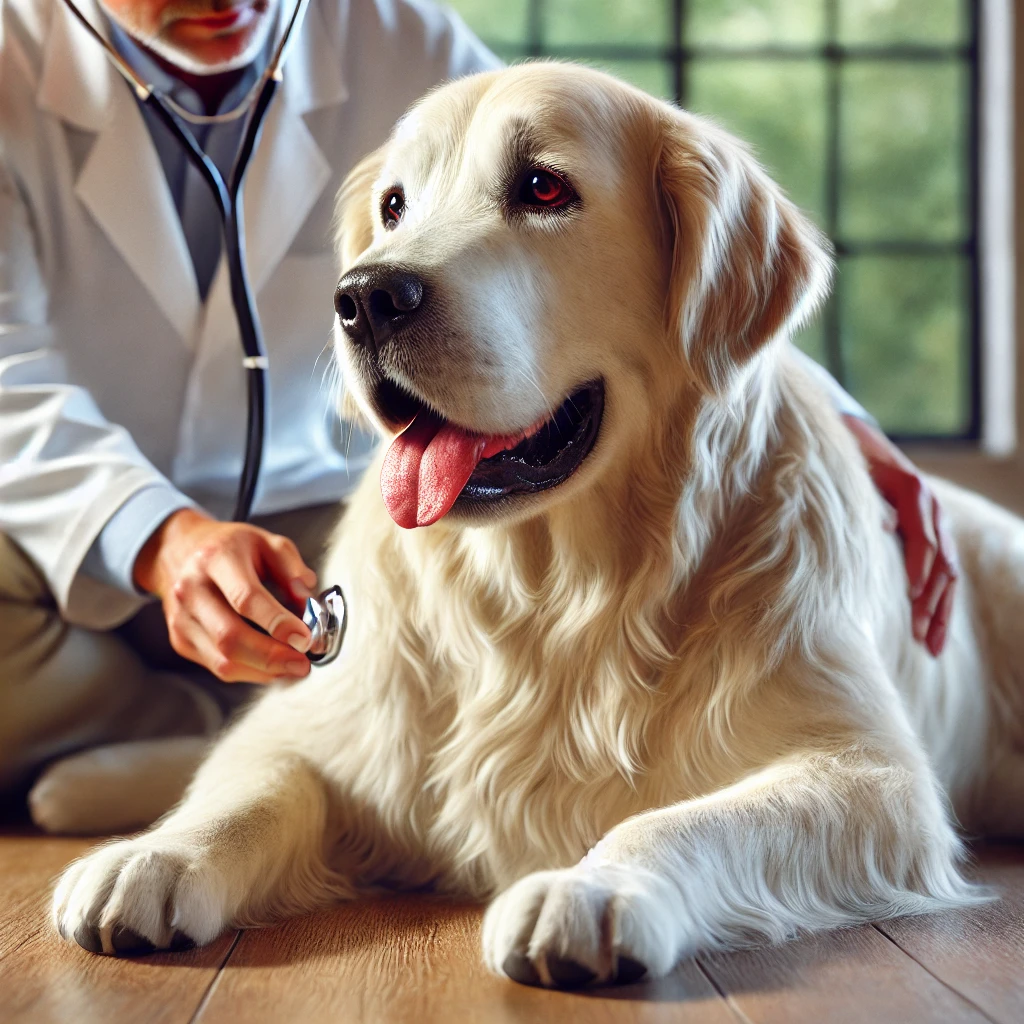
The symptoms of heart failure depend on the severity and stage of the condition. Common signs include:
- Coughing:
- Especially at night or after exercise.
- Difficulty Breathing:
- Rapid or labored breathing.
- Lethargy:
- Reduced energy and reluctance to exercise.
- Fainting or Collapse:
- Due to poor blood flow to the brain.
- Swelling:
- Fluid buildup in the abdomen (ascites) or limbs (edema).
- Weight Loss:
- Despite a normal or increased appetite.
Signs of a Dog Dying of Heart Failure

In the final stages of heart failure, dogs may exhibit:
- Severe Difficulty Breathing:
- Gasping or open-mouth breathing.
- Blue or Pale Gums:
- Due to lack of oxygen.
- Cold Extremities:
- Paws and ears may feel cold.
- Loss of Appetite:
- Refusal to eat or drink.
- Extreme Weakness:
- Inability to stand or walk.
- Restlessness or Confusion:
- Due to discomfort or lack of oxygen.
Heart Disease in Dogs

Heart disease refers to any condition that affects the heart’s structure or function. Common types include:
- Valvular Disease:
- Degeneration of heart valves, common in older small breeds.
- Dilated Cardiomyopathy (DCM):
- Enlargement and weakening of the heart muscle, common in large breeds.
- Congenital Defects:
- Birth defects like patent ductus arteriosus (PDA) or ventricular septal defect (VSD).
- Heartworm Disease:
- Caused by parasitic worms in the heart and lungs.
Canine Congestive Heart Failure Stages

Congestive heart failure (CHF) progresses through four stages:
- Stage A: At-risk dogs with no symptoms (e.g., certain breeds prone to heart disease).
- Stage B1: Structural heart disease is present, but no symptoms.
- Stage B2: Structural heart disease with mild symptoms (e.g., occasional coughing).
- Stage C: Overt heart failure with significant symptoms (e.g., coughing, difficulty breathing).
- Stage D: End-stage heart failure with severe symptoms and poor quality of life.
How Long Can a Dog Live with Congestive Heart Failure?

The life expectancy of a dog with congestive heart failure depends on:
- The Underlying Cause:
- Dogs with valvular disease may live longer than those with DCM.
- The Stage of CHF:
- Early-stage dogs can live for 1-2 years with proper treatment, while end-stage dogs may only survive weeks to months.
- Treatment and Management:
- Medications, diet, and lifestyle changes can improve quality of life and extend survival time.
Treatment and Management of Heart Failure in Dogs

-
Medications:
- Diuretics: Reduce fluid buildup (e.g., furosemide).
- ACE Inhibitors: Improve blood flow (e.g., enalapril).
- Pimobendan: Strengthens the heart’s pumping ability.
-
Diet:
- Low-sodium diets to reduce fluid retention.
- High-quality protein and omega-3 fatty acids for overall health.
- Lifestyle Changes:
- Moderate exercise to maintain muscle tone.
- Avoid stress and extreme temperatures.
- Regular Vet Check-Ups: Monitor the condition and adjust treatment as needed.
Supplements to Support Heart Health in Adult and Senior Dogs

This table outlines supplements that can help prevent heart issues and support cardiovascular health in adult and senior dogs. Always consult your veterinarian before introducing new supplements.
How to Use Supplements for Heart Health

This table provides detailed instructions on how to administer supplements to adult and senior dogs to support heart health.
| Supplement | How to Use | Age Group |
|---|---|---|
| Omega-3 Fatty Acids | Add fish oil or flaxseed oil to food. Use dosage based on weight (consult your vet). | Adults, Seniors |
| Coenzyme Q10 (CoQ10) | Give chewable tablets or capsules. Follow dosage instructions (consult your vet). | Adults, Seniors |
| L-Carnitine | Use liquid or powder form. Mix into food. Follow vet-recommended dosage. | Adults, Seniors |
| Taurine | Use taurine supplements formulated for dogs. Follow dosage instructions. | Adults, Seniors |
| Hawthorn Berry | Use liquid drops or capsules. Mix into food or water. Follow vet-recommended dosage. | Adults, Seniors |
| Magnesium | Use magnesium supplements formulated for dogs. Follow vet-recommended dosage. | Adults, Seniors |
| Vitamin E | Give chewable tablets or liquid form. Follow dosage instructions on the label. | Adults, Seniors |
| Antioxidant Blends | Use dog-specific antioxidant supplements. Follow dosage instructions on the label. | Adults, Seniors |
Key Notes for Using Supplements
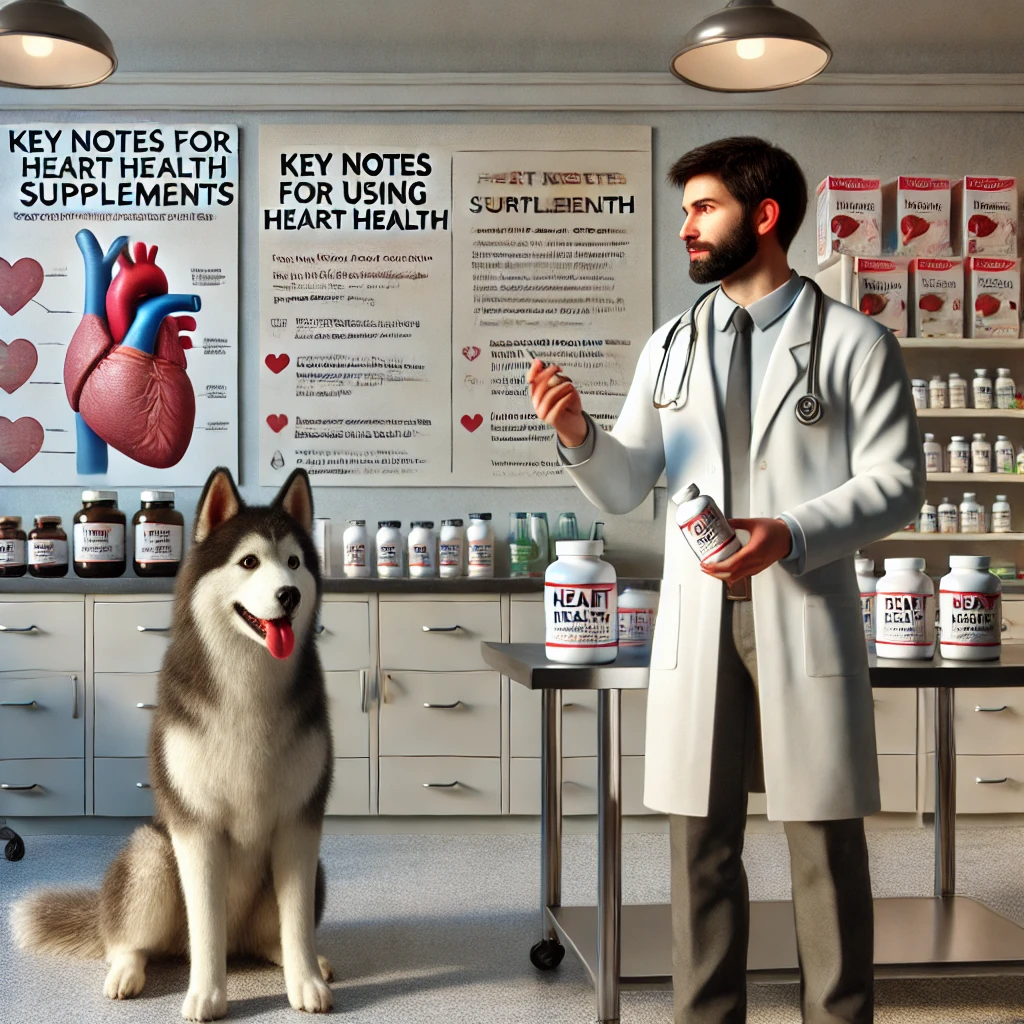
- Consult Your Vet:
- Always check with your veterinarian before starting any supplements.
- Dosage:
- Follow the recommended dosage based on your dog’s weight and age. Over-supplementation can be harmful.
- Monitor for Reactions:
- Watch for any adverse reactions like vomiting, diarrhea, or lethargy.
- Combine with a Healthy Lifestyle:
- Supplements should complement a balanced diet, regular exercise, and routine vet check-ups.
Prevention of Heart Failure in Dogs

- Regular Vet Visits:
- Early detection of heart disease is key.
- Heartworm Prevention:
- Use monthly preventatives to avoid heartworm disease.
- Healthy Diet:
- Feed a balanced, low-sodium diet.
- Exercise:
- Maintain a healthy weight and cardiovascular fitness.
- Breed-Specific Screening:
- For breeds prone to heart disease (e.g., Cavalier King Charles Spaniels, Dobermans).
Closing Statement

Heart failure is a serious but manageable condition in dogs. By understanding the causes, symptoms, and stages, you can provide the best care for your furry friend. Early detection, proper treatment, and lifestyle changes can significantly improve your dog’s quality of life and extend their survival time. Always consult your veterinarian for personalized advice and treatment options.
(FAQs) About Heart Failure in Dogs

Below are detailed answers to common questions about heart failure in dogs, including causes, symptoms, treatment, and prevention.
1. What is heart failure in dogs?
Heart failure occurs when the heart cannot pump blood effectively, leading to fluid buildup in the lungs, abdomen, or other tissues. It is often caused by underlying conditions like valvular disease, dilated cardiomyopathy, or heartworm disease.
2. What are the symptoms of heart failure in dogs?
Symptoms include:
- Coughing (especially at night or after exercise).
- Difficulty breathing or rapid breathing.
- Lethargy and reduced energy.
- Swelling in the abdomen or limbs.
- Fainting or collapse.
3. What causes an enlarged heart in dogs?
An enlarged heart can result from:
- Dilated Cardiomyopathy (DCM): Weakening and thinning of the heart muscle.
- Chronic Valve Disease: Leaky heart valves causing the heart to work harder.
- Hypertrophic Cardiomyopathy (HCM): Thickening of the heart muscle.
4. What are the signs of a dog dying of heart failure?
Signs include:
- Severe difficulty breathing or gasping.
- Blue or pale gums.
- Cold extremities (paws and ears).
- Loss of appetite.
- Extreme weakness or inability to stand.
5. What are the stages of congestive heart failure in dogs?
- Stage A: At-risk dogs with no symptoms.
- Stage B1: Structural heart disease with no symptoms.
-
Stage B2: Structural heart disease with mild symptoms.
-
Stage C: Overt heart failure with significant symptoms.
-
Stage D: End-stage heart failure with severe symptoms.
6. How long can a dog live with congestive heart failure?
With proper treatment, dogs in early stages can live 1-2 years. Dogs in end-stage heart failure may only survive weeks to months.
7. Can heart failure in dogs be cured?
Heart failure cannot be cured, but it can be managed with medications, diet, and lifestyle changes to improve quality of life and extend survival time.
8. What medications are used to treat heart failure in dogs?
- Diuretics: Reduce fluid buildup ( furosemide).
- ACE Inhibitors: Improve blood flow (enalapril).
- Pimobendan: Strengthens the heart’s pumping ability.
9. Are certain breeds more prone to heart failure?
Yes, breeds prone to heart failure include:
- Small Breeds: Cavalier King Charles Spaniels, Dachshunds.
- Large Breeds: Dobermans, Great Danes, Boxers.
10. Can supplements help prevent heart failure in dogs?
Yes, supplements like omega-3 fatty acids, CoQ10, taurine, and antioxidants can support heart health. Always consult your vet before starting supplements.
11. What is the best diet for a dog with heart failure?
A low-sodium diet with high-quality protein and omega-3 fatty acids is ideal. Avoid high-sodium treats and table scraps.
12. How can I prevent heart failure in my dog?
- Regular vet check-ups for early detection.
- Heartworm prevention.
- Feed a balanced, low-sodium diet.
- Maintain a healthy weight through exercise.
13. Can exercise help a dog with heart failure?
Moderate exercise is beneficial, but avoid overexertion. Consult your vet for a tailored exercise plan.
14. What is the life expectancy of a dog with heart failure?
Life expectancy depends on the stage and treatment. Early-stage dogs can live 1-2 years, while end-stage dogs may only survive weeks to months.
15. Can heartworm disease cause heart failure in dogs?
Yes, heartworm disease can damage the heart and lungs, leading to heart failure. Monthly preventatives are essential.
16. What are the signs of heartworm disease in dogs?
- Coughing.
- Difficulty breathing.
- Lethargy.
- Weight loss.
- Swollen abdomen.
17. Can heart failure in dogs be prevented?
While not all cases can be prevented, regular vet visits, heartworm prevention, and a healthy lifestyle can reduce the risk.
18. What is the cost of treating heart failure in dogs?
In a dog with mild or subtle clinical signs, costs typically include: Initial diagnostic testing (radiographs, bloodwork, echocardiogram): $1,000-$1,500. Monthly medications: $50-$150/month. Long-term monitoring (exams, bloodwork, radiographs): $500-$1,000/year.30-Oct-2024
19. When should I consider euthanasia for my dog with heart failure?
Consider euthanasia if your dog:
- Is in unmanageable pain.
- Has a poor quality of life (e.g., unable to eat, drink, or move).
- No longer responds to treatment.
20. How can I improve my dog’s quality of life with heart failure?
- Administer medications as prescribed.
- Provide a low-sodium, high-quality diet.
- Ensure moderate exercise and a stress-free environment.
- Regular vet check-ups to monitor the condition.
Working Breeds
Off Leash K9 Training: Advanced
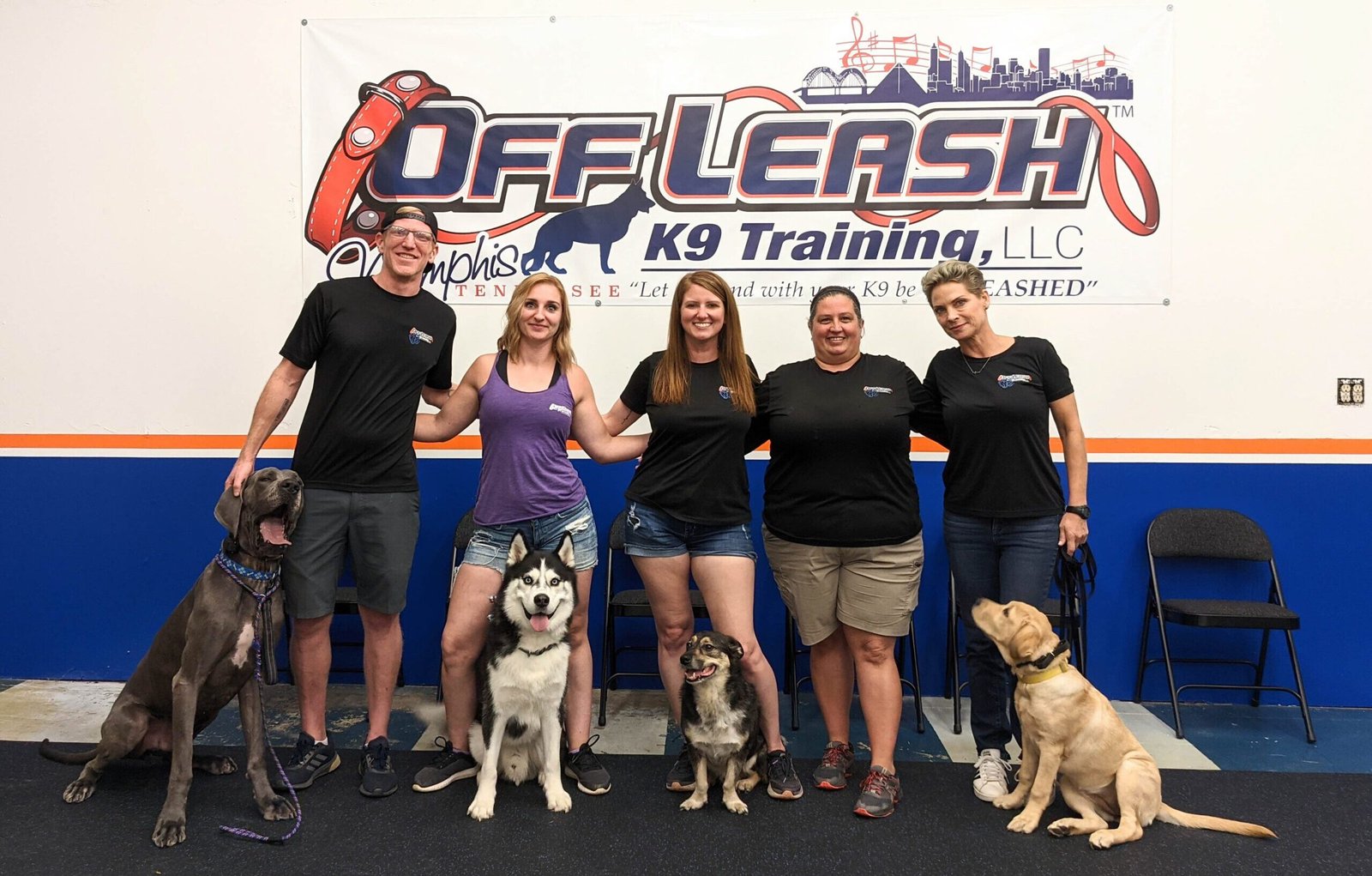
Mastering Off-Leash K9 Training: A Comprehensive Guide

Off-leash K9 training is a game-changer for dog owners who want their pets to experience freedom while maintaining control and obedience. Whether you’re strolling through the park, hiking in the mountains, or simply enjoying outdoor adventures, off-leash training builds trust, enhances safety, and strengthens the bond between you and your canine companion.
For more information regarding 4 seasonal cxcercieses of all dog breeds recommended by the doctors and experts,you can visit our youtube channel:
What is Off-Leash K9 Training?

Off-leash K9 training is a specialized obedience training program that enables dogs to respond to commands reliably without the need for a leash. It focuses on reinforcing commands like come, sit, stay, heel, and place, even amidst distractions. The goal is to achieve 100% obedience, reliability, and confidence in any environment.
Types of Off-Leash K9 Training

- Basic Off-Leash Obedience Training
-
- Focuses on fundamental commands like recall, sit, stay, and heel without a leash.
- Suitable for pet owners who want better control in everyday situations.
- Advanced Off-Leash Training
-
- Includes complex commands, agility training, and off-leash distance control.
- Designed for active dogs, service dogs, and working breeds.
- Off-Leash Protection Training
-
- Trains dogs for personal protection while maintaining obedience off-leash.
- Often used for police, military, or security purposes.
- Off-Leash Sport & Agility Training
-
- Focuses on improving a dog’s performance in agility courses and sports.
- Enhances speed, focus, and precision while off-leash.
- Hunting & Retrieval Training
-
- Specifically designed for hunting and sporting breeds.
- Teaches dogs to track, retrieve, and respond to commands without a leash.
- Therapy & Service Dog Off-Leash Training
-
- Trains service dogs to perform tasks without a leash.
- Used for therapy, assistance, and emotional support work.
The Benefits of Off-Leash Training

- Enhanced Freedom & Safety
- A well-trained off-leash dog can explore freely while remaining under control, ensuring their safety in unpredictable environments.
- Stronger Owner-Dog Bond
- Training deepens the connection between you and your dog, reinforcing trust and communication.
- Improved Socialization
- Proper off-leash training helps dogs remain calm and well-behaved around people and other animals.
- Better Mental Stimulation
- Off-leash adventures provide dogs with physical and mental enrichment, reducing boredom and destructive behavior.
Key Techniques for Effective Off-Leash Training

- Foundation in Basic Obedience
- Before advancing to off-leash training, ensure your dog masters basic on-leash commands and recall.
- Positive Reinforcement
- Reward-based training, using treats, praise, or toys, encourages dogs to follow commands willingly.
- E-Collar Conditioning
- Many professional trainers use low-level electronic collars as a reinforcement tool, teaching dogs to associate gentle stimulation with commands.
- Distraction Training
- Training in different environments with varying distractions ensures reliability in real-life situations.
- Consistency & Patience
- Regular practice, gradual progression, and consistency are crucial for long-term success.
Finding a Professional Off-Leash Trainer
For the best results, consider enrolling your dog in a professional off-leash K9 training program. Expert trainers specialize in behavior modification, e-collar training, and customized programs tailored to different dog breeds and temperaments. Look for trainers with:
- Certified experience in K9 obedience training
- Positive reviews and proven success stories
- A structured training methodology
Closing Statement

Off-leash K9 training is an investment in your dog’s safety, happiness, and overall well-being. Whether you choose to train independently or work with professionals, dedication and consistency are key. When done correctly, off-leash training gives your dog the ultimate gift—freedom with discipline.
Are you ready to take your dog’s training to the next level? Explore professional off-leash training options and enjoy the benefits of a well-trained, obedient, and happy K9 companion.
Frequently Asked Questions (FAQs)

1. Is off-leash training suitable for all dog breeds?
Yes, most dogs can benefit from off-leash training, but the approach may vary based on breed, temperament, and previous training. High-energy and intelligent breeds often adapt faster.
2. How long does it take to train a dog for off-leash obedience?
The timeline varies depending on the dog’s age, breed, and temperament. Some dogs learn basic off-leash commands in a few weeks, while others may take months for full reliability.
3. Is an e-collar necessary for off-leash training?
Not necessarily, but many professional trainers use low-level e-collars as reinforcement tools. When used correctly, they help dogs associate mild stimulation with commands without causing harm.
4. Can an older dog be trained for off-leash obedience?
Yes, older dogs can be trained off-leash, but they may require more patience and consistency. Prior obedience training experience can make the process smoother.
5. Will my dog run away if trained off-leash?
A properly trained dog should have a strong recall command, reducing the risk of running away. However, training must be reinforced regularly to ensure reliability.
6. What are the risks of off-leash training?
Potential risks include distractions leading to loss of control, interactions with aggressive animals, or exposure to unsafe environments. Supervision and ongoing reinforcement training help mitigate these risks.
7. Can I train my dog off-leash without professional help?
Yes, with patience and consistency, you can train your dog yourself. However, professional trainers can provide structured guidance and quicker results.
8. Should I practice off-leash training in public places?
Initially, train in a controlled, enclosed environment. Gradually introduce distractions before practicing in public areas to ensure your dog responds reliably.

-

 SMALL DOG BREEDS4 months ago
SMALL DOG BREEDS4 months agoMerle Chihuahua: A Comprehensive Guide
-

 SMALL DOG BREEDS4 months ago
SMALL DOG BREEDS4 months agoMaltese: A Beloved Companion
-

 Large Breeds4 months ago
Large Breeds4 months agoSamoyeds Hypoallergenic: Closer Look at the Breed
-

 SMALL DOG BREEDS4 months ago
SMALL DOG BREEDS4 months agoMerle Pomeranian: A Adorable Companion
-

 Large Breeds4 months ago
Large Breeds4 months agoStandard Poodle Weight: Country Wise
-

 SMALL DOG BREEDS4 months ago
SMALL DOG BREEDS4 months agoYorkshire Terrier: a Big Personality
-

 MEDIUM BREEDS4 months ago
MEDIUM BREEDS4 months agoAmerican Water Spaniel Colors Chocolate In Crcols:
-

 Terrier Breeds3 months ago
Terrier Breeds3 months agoDog Breeds: by Country & Category

